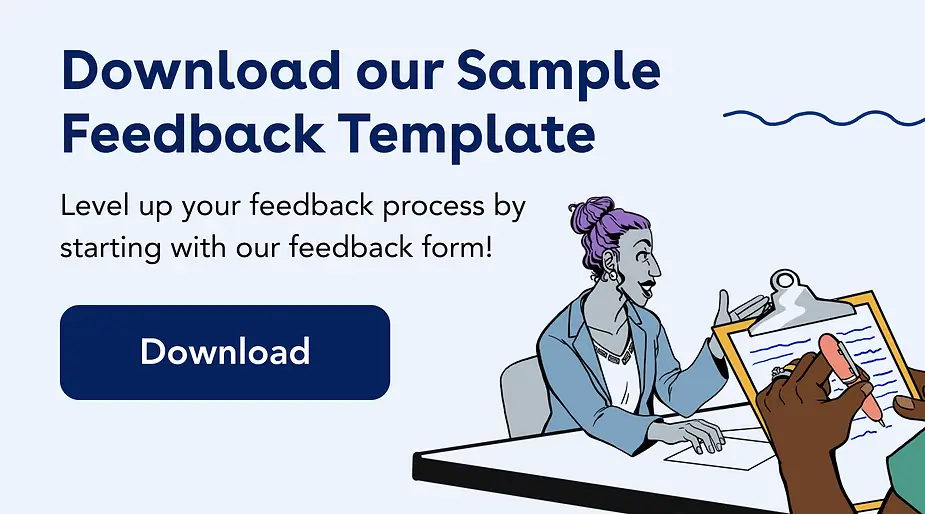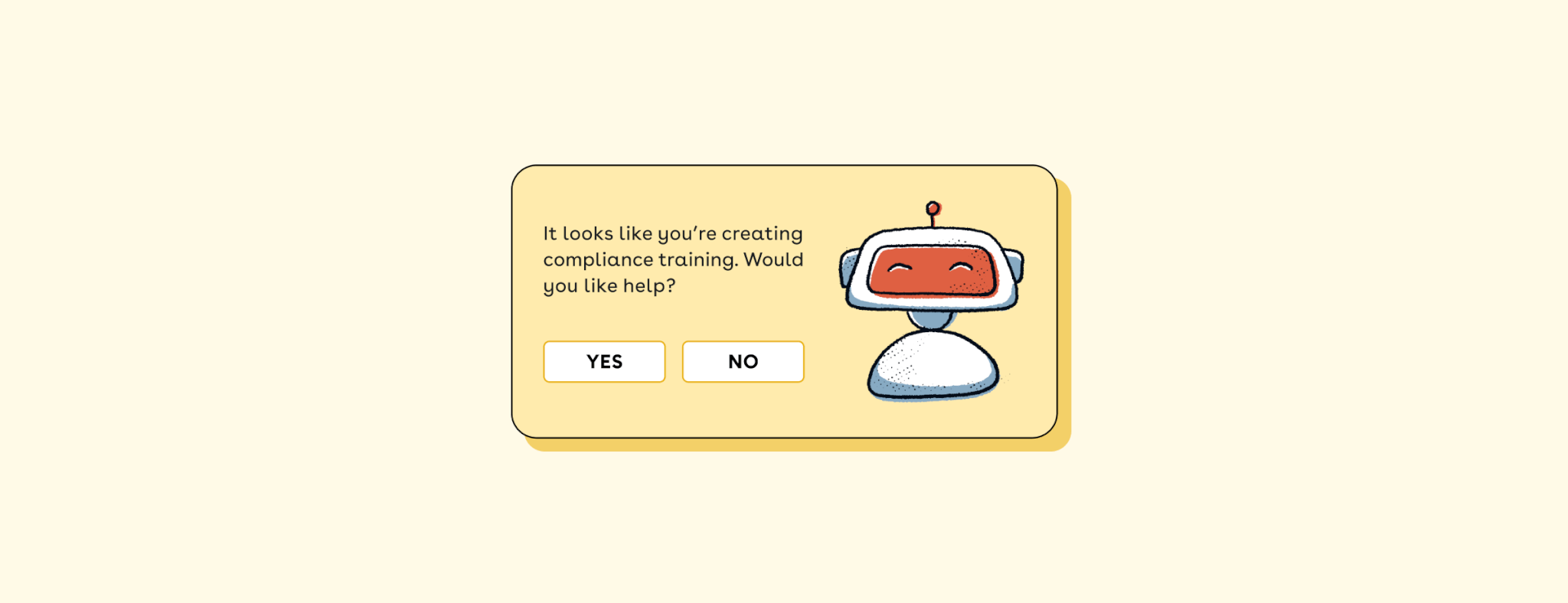Here at Ethena, we’re big fans of feedback — giving feedback to one another, asking for it from our colleagues and customers, and receiving feedback on the things we make and the way we make them. This healthy culture of feedback opens doors to transparency, improvement, and trust.
We love direct feedback, especially when it’s given with kindness and tact. Because we’re at our best when we’re all trying to be better, and the training we make wouldn’t be possible without the 2.3 million pieces of feedback we’ve received from our learners up until now.
Feedback is what moves our organization forward, from our product to the way we work together as a team. Looking to develop a healthy and professional culture of feedback at your company? You've come to the right place. In this article, we’ll cover:
- Why feedback is important for organizations
- How it helps companies grow
- How we build and maintain a feedback culture in our workplace
- Tips for giving feedback
- Advice for building a feedback framework (hint: it has something to do with Feedback Fridays)
For our fellow feedback fans, we’ve also included a sample feedback template that you can take to your next strategy or feedback session. Check it out below or click here to download!

Why is workplace feedback so important?
- It helps leaders make the right choices for the company, both big and small. This should be obvious, but successful companies rely on things like internal (employees) and external (customers) surveys to know what’s working and where to dig deeper.
- Frequent feedback helps teams work better together and encourages growth. Ideally, it keeps employees and managers happy since everyone is able to communicate openly. And, in the worst case scenario, there are no surprises when someone leaves the organization.
- Feedback from customers should shape your product! If they’re buying for a certain reason, you know to keep that consistent (and invest in improving on it). Not only does customer feedback serve as an indicator of where to fix things, it also gives you the first indication of what’s going well and how to improve.
- Customer feedback is also an easy way to refine your future brand. As Ethena’s CRO Arnie Gullov-Singh says, "The way your current customers describe your product is the way you should describe your product to your future customers."
So, how do you make feedback essential to the culture of your workplace?
What exactly are Feedback Fridays?
For Ethena, Feedback Fridays are bi-weekly one-on-one sessions between direct reports and their managers as a way to both prompt feedback and foster better communication between team members who work together on a daily basis. This helps us create a feedback culture.
What do we mean by "feedback culture"?
Feedback culture is an environment where employees feel free, safe, and encouraged to share feedback with peers and management. Let's touch on a few of those elements in more detail:
- Free: While Feedback Friday constitutes a day for feedback, the broader concept of feedback culture empowers employees and teammates to feel free to share feedback whenever necessary.
- Safe: Employees should be able to share feedback without repercussions, damaged relationships, or ill feelings.
- Encouraged: Feedback isn't only allowed — it's encouraged and promoted.
Why do we emphasize weekly feedback sessions?
- Regular feedback can solve a lot of potential headaches well before they snowball out of control. If you’re checking in weekly, monthly, or quarterly, everyone will have a better understanding of what problems need to be solved, faster.
- Regular feedback also helps ease minor frustrations we might have early while celebrating the little wins week-to-week. (Goodbye for now, impostor syndrome!)
- Giving and receiving feedback is a difficult-to-master communication tool that helps you build better working relationships faster. (Another great idea? Using a “How to Work with Me” User Manual.)
How Feedback Fridays work at Ethena:
In each Feedback Friday, each team member begins by answering two main questions:
- “What’s going well?”
- “How can we level up?”
These should be answered for yourself, your colleague, and the team at large. This is a great way to share the positives of the week, which includes celebrating little wins and tracking progress for yourself and your team.
On the other hand, the weekly feedback sessions help individuals and teams break down what isn’t working and creates the opportunity to find the solution(s) together. A good phrase here is “how can I/the team support you or help you solve this problem?” This way, no one feels like they’re on their own when issues arise, empowering everyone to address mistakes head-on.
How to give feedback
- Ask for permission! This allows employees to be more prepared to receive feedback and in turn makes them more receptive to it.
- Use positive language. Reframe what needs improvement in a positive way and avoid negative language. A couple of good examples of phrases to use for this are: “This is your biggest area of opportunity,” meaning where someone needs to improve, and “let’s work on this going forward,” indicating that the employee has your support.
- Be practical and relevant. Let your employees know that you understand the challenges they’re facing. Set up a recurring meeting to discuss both ongoing and new goals and to celebrate progress. Focus your feedback on what is relevant to the workplace.
Creating a feedback-forward culture
Ready to build a culture of feedback at your company? Download our free sample feedback template. It'll help guide your discussions and provide feedback in a healthy and professional manner.
Plus, when you're using a template, you can ensure your feedback is replicable and trackable. Remember to keep notes and check in regularly to ensure feedback is being applied.









